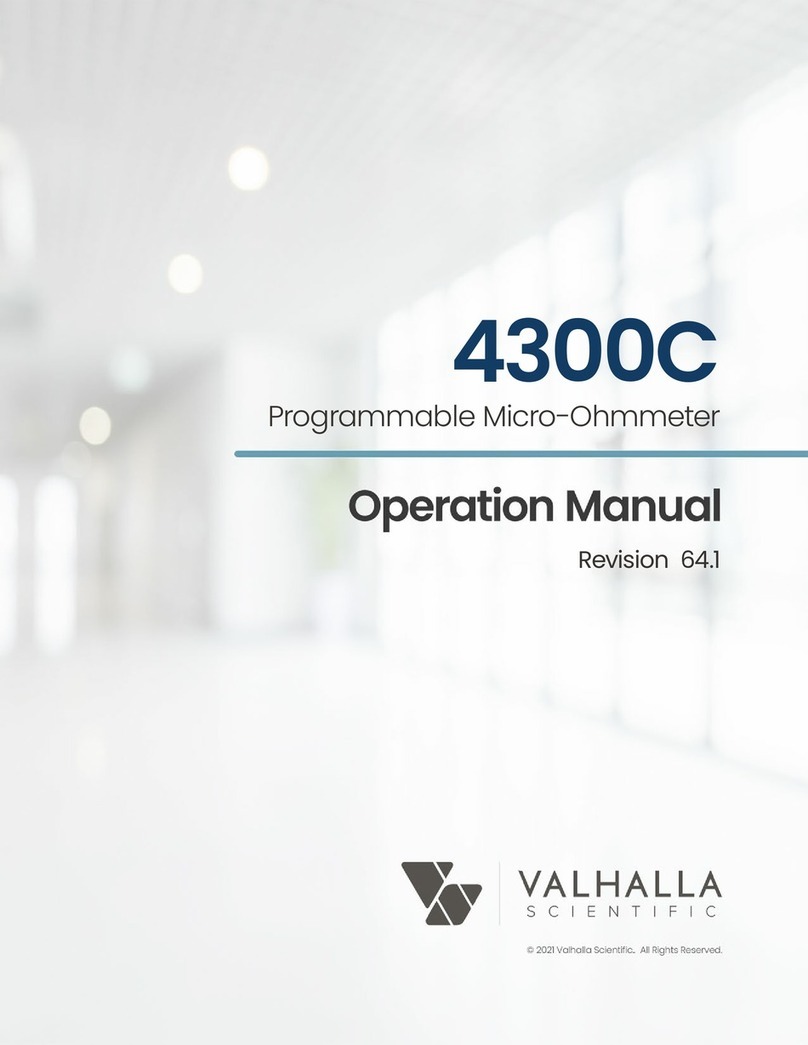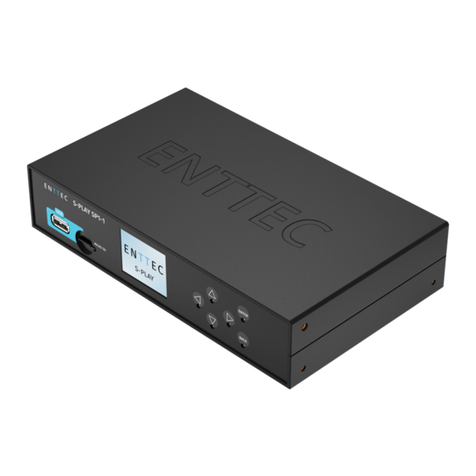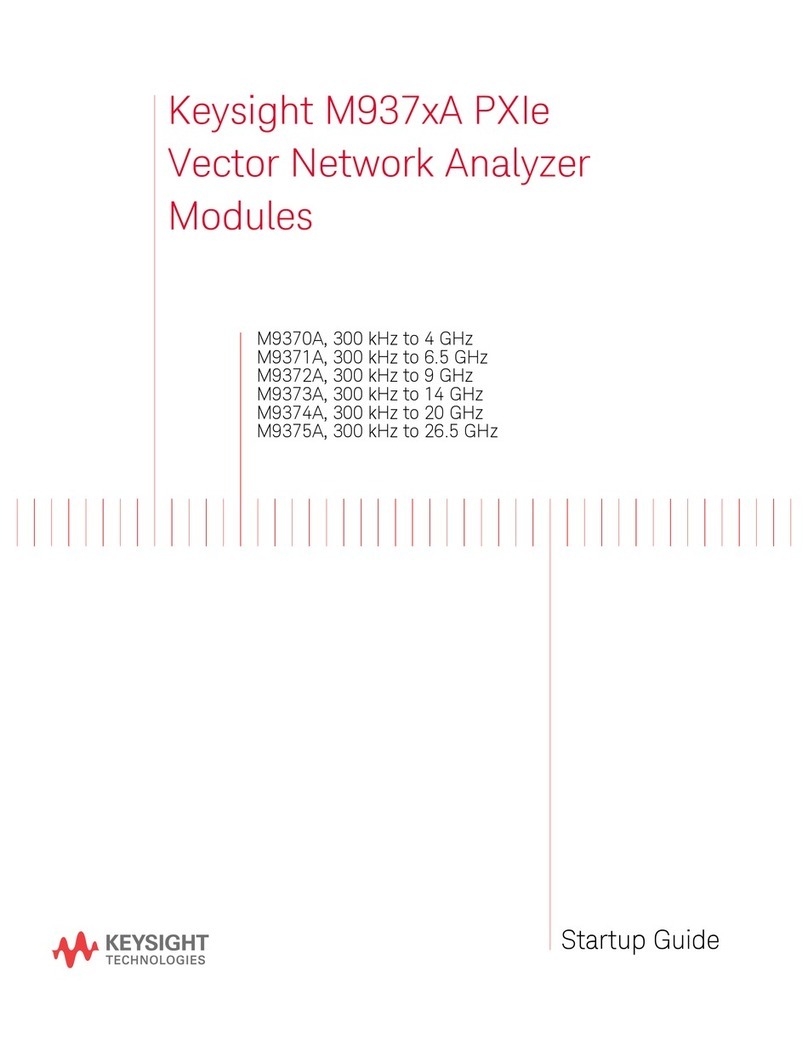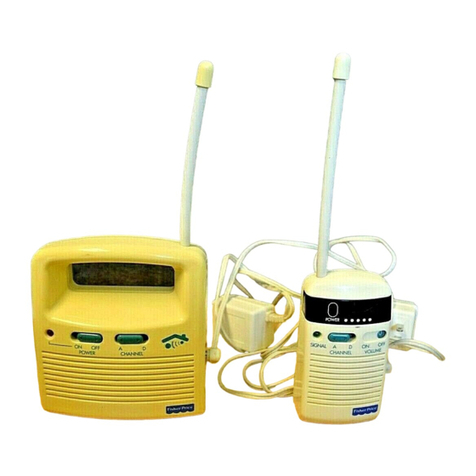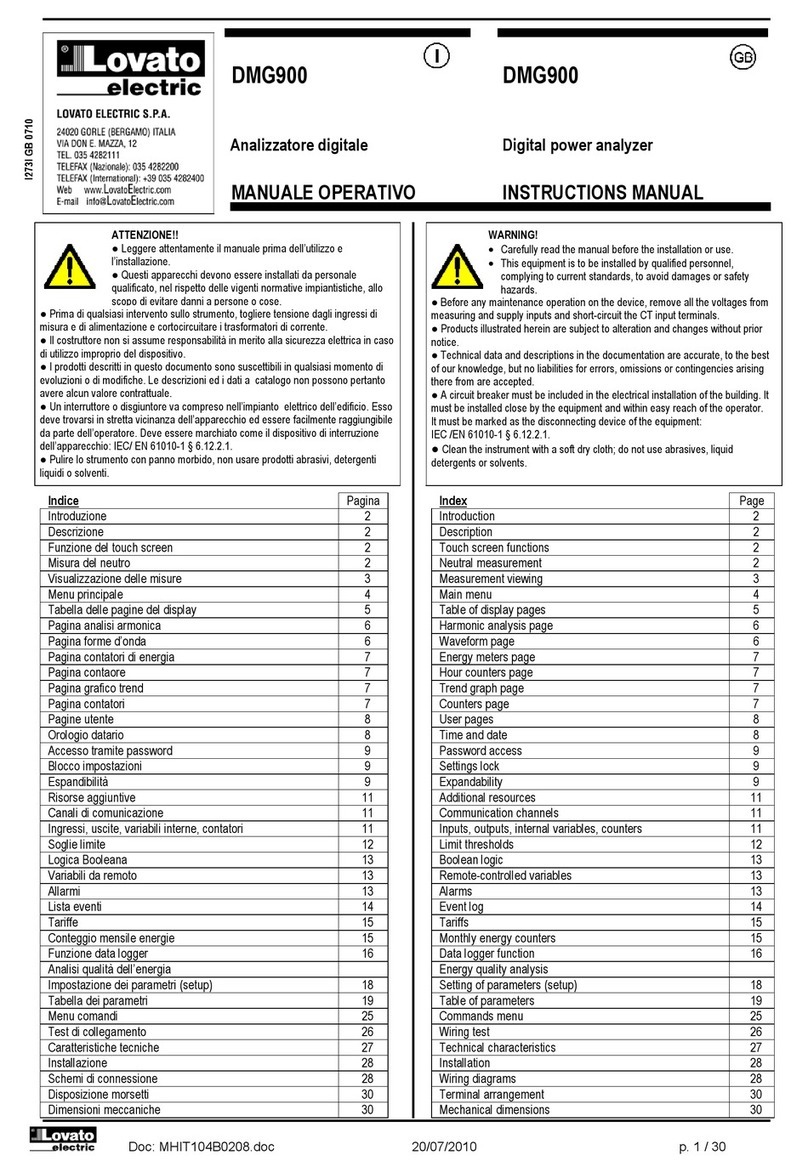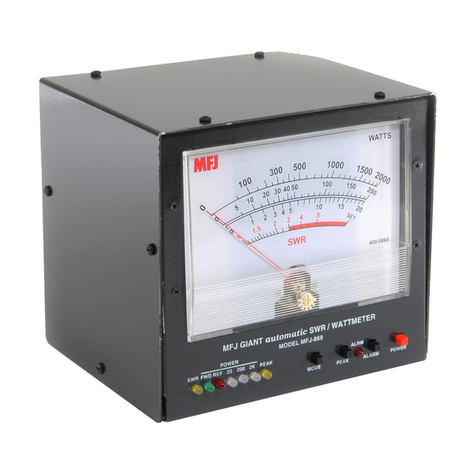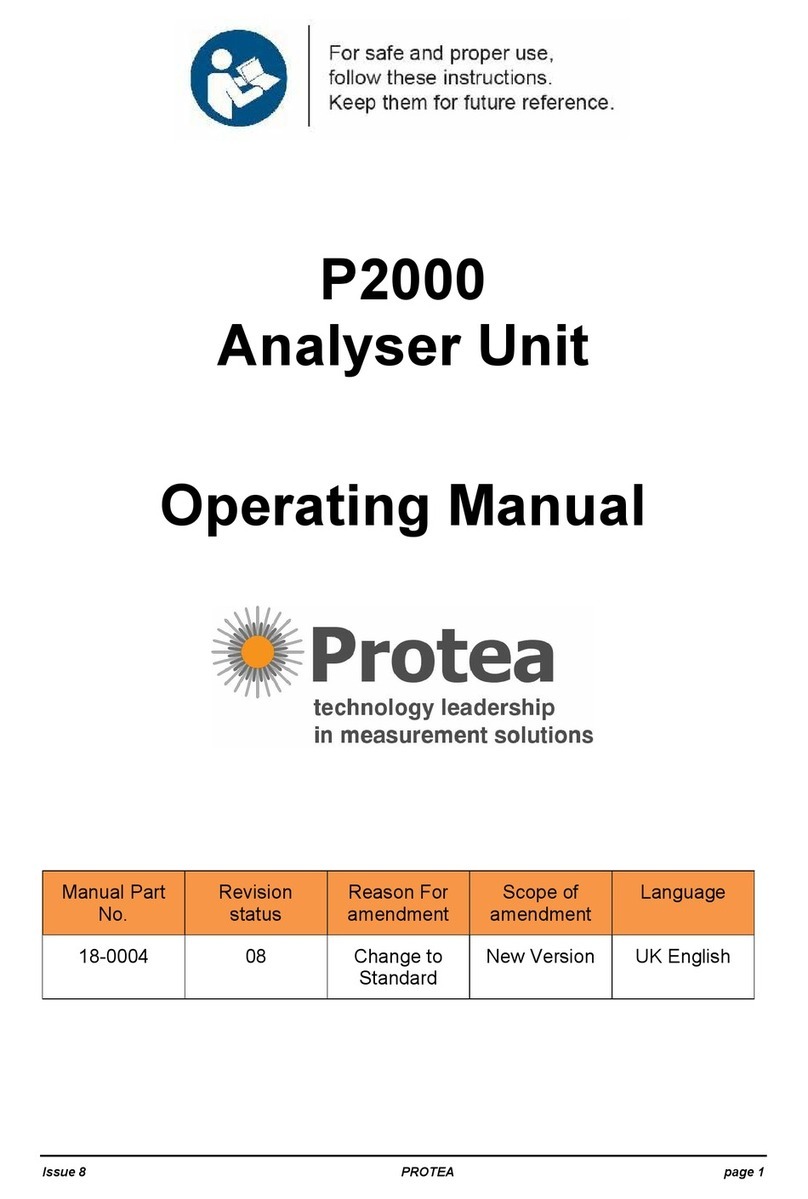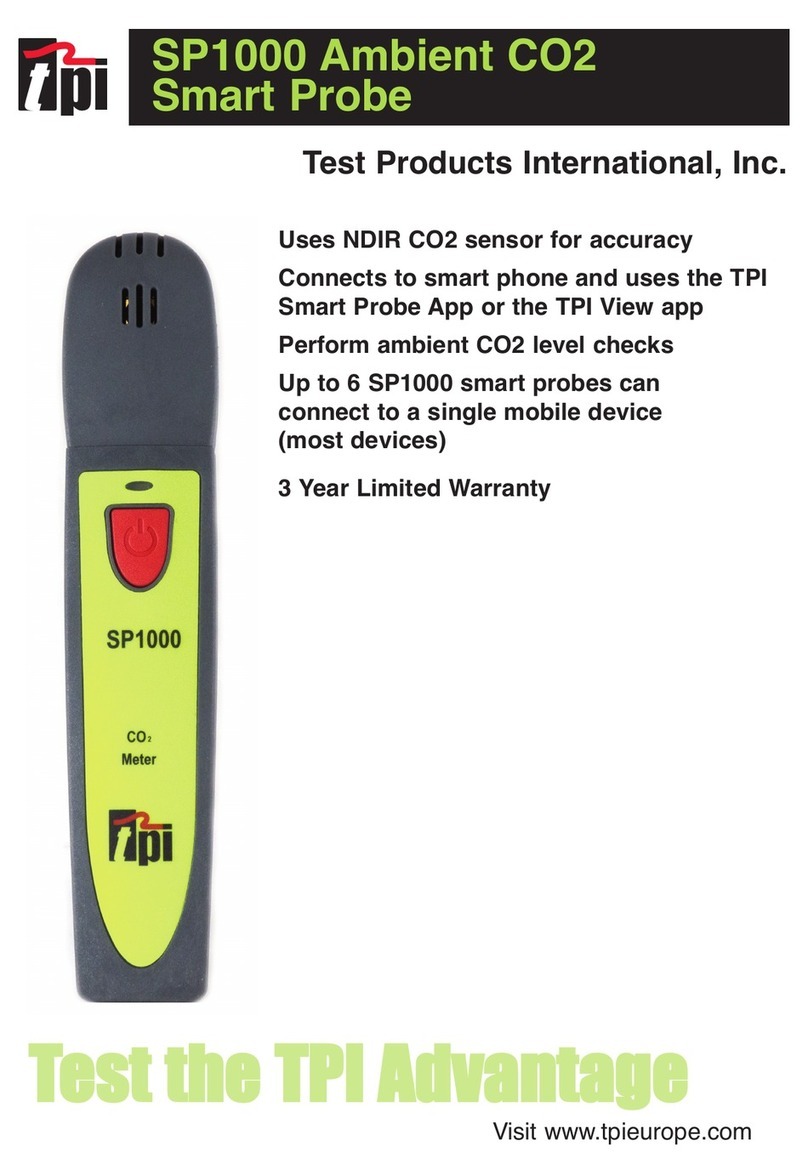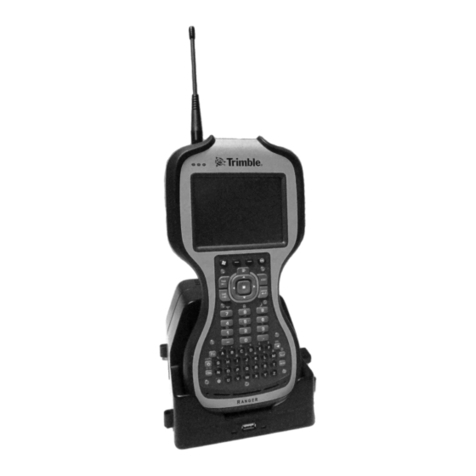NOVARDEN NRH120 Instruction Manual

Device pH-/pH+ (Cristal LCD)
NOT003ENV10_FP1
INSTRUCTIONS AND USER MANUAL

Instructions and user manual Device pH-/pH+ NOT003ENV10_FP1
SUMMARY
1.0 - WARNINGS AND TIPS................................................................................................. 1
1.1 - GUARANTEE AND WARNING ....................................................................................................................... 1
1.2 - SHIPPING AND TRANSPORTING................................................................................................................... 1
1.3 - PROPER USE OF THE PUMP ......................................................................................................................... 2
1.4 - RISKS .......................................................................................................................................................... 2
1.5 - TOXIC AND/OR DANGEROUS LIQUID DOSAGE ............................................................................................. 2
1.6 - ASSEMBLING AND DISMANTLING THE PUMP............................................................................................... 3
2.0 PUMP DESCRIPTION ..................................................................................................... 4
2.1 Parts description ................................................................................................................................................... 4
2.2 Buttons description : ............................................................................................................................................. 4
3.0 INSTALLATION AND RECOMMENDATION............................................................ 5
3.1 Recommendations................................................................................................................................................. 5
3.2 Hydraulic and electric installations......................................................................................................................... 5
3.3 Mounting .............................................................................................................................................................. 6
4.0 COMMISSIONING AND OPERATION ........................................................................ 8
4.1 Calibration procedure............................................................................................................................................ 8
4.2 Pump priming........................................................................................................................................................ 9
4.3 Settings ................................................................................................................................................................. 9
4.4 Operating principle...............................................................................................................................................10
4.5 Turning ON and OFF the device.............................................................................................................................10
5.0 ALARMS “ALR”...............................................................................................................11
6.0 INCORRECT MEASURE AND SOLUTIONS.............................................................11
6.1 Incorrect measure ................................................................................................................................................11
6.2 Procedure for increasing the TAC..........................................................................................................................11
7.0 MAINTENANCE ..............................................................................................................11
7.1 Replacement of the peristaltic tube ......................................................................................................................12
7.2 Maintenance of the electrode...............................................................................................................................12
7.3 DEVICE PH-/PH+ wintering....................................................................................................................................12
7.4 Electrode wintering ..............................................................................................................................................13
7.5 Chemicals advised and unadvised .........................................................................................................................13
8.0 AFTER SALES SERVICE ...............................................................................................13
9.0 SPARE PARTS LIST ........................................................................................................ 1

Instructions and user manual Device pH-/pH+ NOT003ENV10_FP1
1
1.0 - WARNINGS AND TIPS
Please read the warning notices very carefully because they provide important information regarding safety
in installation, maintenance and use of the pump.
• Keep this manual in a safe place, so that it will always be available for further consultation.
• The device complies with EMC: 2004/108/EEC “electromagnetic compatibility” and LVD: 2006/95/EC “low
voltage ” as also the subsequent modifications.
N.B.: the pump has been constructed in accordance with best practice. Both its life and its electrical and
mechanical reliability will be enhanced if it is correctly used and subjected to regular maintenance.
1.1 - GUARANTEE AND WARNING
The material is guaranteed 24 months for parts and labour upon return to our workshops (see the grey
label on the unit):
The shipping costs are charged of the customer. If the repair is carried out as part of the warranty, return is
supported by the manufacturer. The wear parts excluded of the warranty are : pH or redox probe, injection
valve, foot filter and peristaltic hose.
WARNING: any intervention or repair to the internal parts of the pump must be carried out by qualified and
authorized personnel. The manufacturers decline all responsibility for the consequences of failure to
respect this rule.
1.2 - SHIPPING AND TRANSPORTING
The pump will always be moved in a vertical (and never in a horizontal) position. No matter what the means
of transport employed, delivery of the pump, even when free to purchasers or the addressee’s domicile, is
always at the purchaser’s risk. Claim for any missing materials must be made within 10 days of arrival, while
claims for defective materials will be considered up to the 30th day following receipt. Return of pump or
other materials to us or the authorized distributor must be agreed beforehand with the responsible
personnel. Material should be disassembled and packed with care. All parts in contact with the chemical
should be purged and rinsed for everyone’s safety. If the pump can not be purged, fasten the input with the
output using a tube (see figure below). In the case of non-compliance with this guideline, we reserve not to
support the materials and to return it at your expense and any damage created by the chemical on the
material will undergo a repair quote.
Adress or website

Instructions and user manual Device pH-/pH+ NOT003ENV10_FP1
2
1.3 - PROPER USE OF THE PUMP
The pump should be used only for the purpose for which it has been expressly designed namely the dosing
of liquids. Install the pump in a dry place and well away from sources of heat, and in any case, at
environmental temperature not exceeding 40°C. The operating minimum temperature depends of the
liquid to be pumped, bearing in mind that it must always remain in a liquid state. Any different use is to be
considered dangerous. The pump should not therefore be used for applications that were not allowed for
in its design. In case of doubt please contact our offices for further information about the characteristics of
the pump and it proper use. The manufactures can not be held responsible for damage deriving for
improper, erroneous or unreasonable use of the pump.
Please read carefully the followings:
This appliance can be used by children aged from 8 years and above and persons with reduced physical,
sensory or mental capabilities or lack of experience and knowledge if they have been given supervision
or instruction concerning use of the appliance in a safe way and understand the hazards involved.
Children shall not play with the appliance.
Cleaning and user maintenance shall not be made by children without supervision.
1.4 - RISKS
After unpacking the pump, make sure that it is completely sound. In case of doubt, do not use the pump
and contact qualified personnel. The packing materials (plastic bags, polystyrene, etc.) should be kept out
of the reach of children: they constitute potential sources of danger.
Before you connect the pump make sure that the voltage ratings correspond to your particular voltage
supply. You will find this value on the rating plates attached to the pump.
The electrical installation to which the pump is connected must comply with the standards and good
practice rule in force in the country under consideration.
Use of electrical equipment always implies observance of some basic rules. In particular:
- Do not touch with wet or damp hands or feet.
- Do not operate the pump with bare feet (typical place: swimming pool )
- Do not leave the equipment exposed to the atmospheric agents
- Do not allow the pump to be used by children or unskilled individuals without supervision
• The device must be supplied through a circuit with a residual current differential device (RCD) rated
differential operating current not exceeding 30 mA
• The appliance must be placed in a place that can not be flooded.
• The appliance must be connected electrically via a means of disconnection to the supply network, the
opening of the contacts of all the poles ensuring a complete break under the conditions of overvoltage
category III.
• The mains protection of the device is achieved by a thermal fuse T315 mA 250V.
In case of breakdown or improper functioning of the pump, switch off, but do not touch. Contact our
technical assistance for any necessary repairs and insist on the use of original spares. Failure to respect this
condition could render the pump unsafe to use.
• For Australia and New Zeland Only, For stationary appliances permanently connected to the fixed wiring,
compliance with this requirement is considered to be met if the instruction considering disconnection
incorporated in the fixed wiring is in accordance with AS/NZS 3000.

Instructions and user manual Device pH-/pH+ NOT003ENV10_FP1
3
•In case of damage of power supply cord please ask the repair to our technical assistance or qualified and
authorized personnel, to avoid any hazard.
When you decide to make no further of an installed pump, make sure to disconnect it from the power
supply.
Before carrying out any service on the item, check:
1) Disconnect the plug from the mains.
2) Relieve all the pressure from the pump head or the injection tube.
3) Drain or flush all dosing liquid from the pump head. This operation can also be done with the pump
disconnected from the plant by turning the pump upside-down for 10 seconds and without connecting the
tubing to the nipples.
In event of possible losses on the hydraulic system of the pump (breakage of the O-ring, the valves or the
hoses), the pump should immediately be brought to a stop, emptying and depressurizing the delivery hos
while taking all due the safety precautions (gloves, goggles, overalls, etc.).
1.5 - TOXIC AND/OR DANGEROUS LIQUID DOSAGE
To avoid risk from contact with hazardous liquids or toxic fumes, always adhere to the notes in this
instruction manual:
• Follow the instructions of the dosing liquid manufacturer
• Check the hydraulic part of the pump and use it only if it is in perfect condition
• Use only the correct materials fir the tubing, valves and seals to suit the liquid to be dosed : where
possible shield the tubing with PVC conduit.
• Before disconnecting the metering pump, make sure to flush out and neutralize the pump head with the
proper reagent liquid.
1.6 - ASSEMBLING AND DISMANTLING THE PUMP
1.6.1 - ASSEMBLY
See paragraph 3.0 “Installation and recommendation”
1.6.2 - DISMANTLEMENT
Proceed as follows when you dismantle the pump or before performing any operation on it:
1) Disconnect the plug from the mains.
2) See paragraph 1.2 shipping and transporting

Instructions and user manual Device pH-/pH+ NOT003ENV10_FP1
4
2.0 PUMP DESCRIPTION
DEVICE PH-/PH+ is characterized by its ability to measure pH value (between 0 and 14) with its probe
placed on the filtration system that analyses the pool water.
Depending of the measured value, DEVICE PH-/PH+ will inject with its dosing pump the amount of product
needed to maintain the balance of the pool water.
DEVICE PH-/PH+ works in acid (pH-) or basic (pH+) dosage.
2.1 Parts description
Here are the complete contents of the package you received. All parts will be necessary for the proper
operation of your device.
A. Shutter
B. 4 m of tube 4x6 PVC crystal
C. Electrode pH
D. Clamp DN50
E. Foot filter
F. Buffer solution pH7
G. Inline electrode holder
H. Injection valve
I. Screws and peg for wall mounting x2
J. Bracket
2.2 Buttons description :
Fig. 2
1- Press
SET
to see and adjust the set point
2- Press
CAL
allows the calibration of the pH to pH 7, associated to the
SET
button to change the
value of the set point.
3- 7.0 value of the pH in water
4- pH- unit of measure and indicate that the device must inject an acid
5-
ON/OFF
button to turn on the device, and, kept pressed, to prime the pump
4
Fig. 1
1
2
3
1
5

Instructions and user manual Device pH-/pH+ NOT003ENV10_FP1
5
3.0 INSTALLATION AND RECOMMENDATION
3.1 Recommendations
Install the pump in a dry place and well away from sources of heat, and in any case, at
environmental temperature not exceeding 40°C. The operating minimum temperature depends of
the liquid to be pumped, bearing in mind that it must always remain in a liquid state.
The pump is to be located where flooding cannot occur.
Carefully observe the national wiring rules in force in the various countries as regards of electrical
installations. For Australia and New Zeland, the rules references are in accordance with AS/NZS
3000.
A mean for disconnection from the supply mains must be present and must have a contact
separation in all poles that provide full disconnection under overvoltage category III.
3.2 Hydraulic and electric installations
Fig. 3
L: Filtration pump already presents on your installation and intended to circulate the water sucked into the
pool to the filtration.
M: Electrical case already present on your installation that is intended to control your entire filtration.
N: Cable without plug for connection to the electrical case of the pool « M » either on
The terminals of auxiliary contact relay to the filtration pump “L”
The terminals in parallel with the coil A1and A2 of the relay filtration pump “L”
The voltage to be applied to this cable is 230V - 240V. Thus the device will be powered only when the
filtration pump is on.
Power supply : 230V - 240V 50/60Hz Power : 10W
Max flow rate : 1,5 l/h Max pressure : 1,5 bars (150 000 Pa)
N
M : Inside Electrical case
of the swimming pool
Coil A1
Coil A2

Instructions and user manual Device pH-/pH+ NOT003ENV10_FP1
6
Warning :
Under no circumstances the device will be connected in parallel on the power supply terminals of
the filtration pump “L” into the electrical case “M”
It is important to keep a minimum distance of 20cm between the probe “C“ and the injection point
“H”.
The injection point “H”must be placed the last on the hydraulic installation (see fig. 3)
In the case of an installation with redox and pH regulation, it is advised to put the two sensors side
by side and the pH injection before chlorine injection to minimize the risk of scale deposition on the
chlorine injection.
For optimal service life of your peristaltic tube, it is advised not to exceed a pressure of 1 bar and in
no case exceed a pressure of 1.5 bar (150 000 Pa).
The pH probe must be settled before the chlorine injection point, the salt chlorinator cell and the
heater.
3.3 Mounting
3.3.1 Dimensions
3.3.2 Bracket
Fig. 4
102 mm
143 mm

Instructions and user manual Device pH-/pH+ NOT003ENV10_FP1
7
3.3.3 Prepare the sensor for start-up
3.3.4 Mounting of the clamp
This assembly isfixed on the pipe.
Next
3.3.5 Mounting of injection valve
3.3.6 Mounting of the probe on the probe holder
After removing the protective cap from the electrode, you need to insert all the parts as shown in the fig.9.
When all parts are engaged, tighten the nut without blocking it then push slowly the electrode to the
bottom of the hose and lift it about 2 cm so that the electrode tip is at the middle of the hose. Connect the
probe to the back of the pump on the BNC. (fig.10)
Votr
e
text
e ici
Pierce the top wall of the pipe through
the clamp :
-Ø8mm for the injection valve
-Ø14 mm for the probe.
Percer la paroie supérieur du tuyau à
travers les colliers de prise en
charge 8mm pour le clapet d’injection
et 14mm de diamètre pour la sonde
O-Ring
A nut
Put Teflon tape on threads
Put Teflon tape on threads
Fig. 5
Fig. 6
Fig. 7
Fig. 8
G
H
1)Remove the
protective cap of the
probe and keep it for
reuse at the time of
wintering.
2) Rinse the probe in tap water for at
least 20 minutes, that is why we
suggest you to start with this step.

Instructions and user manual Device pH-/pH+ NOT003ENV10_FP1
8
The hydraulic hose is placed in the same way on the
foot filter and on the pump.
1 : Slide the tube through the nut
2 : Put the tube at the bottom of the conical nipple
3 : Screw by hand the nut on the nipple
3.3.6 Mounting description of tube on the injection valve
4.0 COMMISSIONING AND OPERATION
4.1 Calibration procedure
This operation is used to precise the DEVICE PH-/PH+ probe reading.
The tube
A nut
A nipple
Before carrying out the probe calibration, remember to :
Stop the filtration pump.
Close the isolation valves if existing.
Remove the probe of the probe holder.
Put the shutter “A” (fig. 12) to plug the hole in the probe
holder.
Open the isolation valves if existing.
Turn on the filtration pump and check that the Device pH-
/pH+ displays a pH value. If « OFF » is displayed, press the
« ON/OFF » button to turn it on.
Carry out the probe calibration and repeat the previous
actions to put the electrode in place.
Nut
Disk brake
Washer seat
Shutter
O ring
Fig. 11
Fig. 12
Bracket
O-ring
Washer seat
Disk brake
A nut
Fig. 9
Fig. 10
Rotate the plug ¼ turn to
close the connection
Plug the plug into the
bayonet socket

Instructions and user manual Device pH-/pH+ NOT003ENV10_FP1
9
Some important points :
The operation below is to be done at the beginning of each season during the commissioning of
the pool, and preferably every 3 or 4 months for the signal to remain the most correct possible.
The procedure is renewed in case of abnormal consumption of chemicals.
4.2 Pump priming
4.3 Settings
DEVICE PH-/PH+ functions
Factory settings
Unit of measure
pH
Set point
From pH7.0 to 7,6
Type of regulation
Acid- reduce the pH by dosage of an acid (pH-)
Base - increase the pH by dosage of a base (pH+)
pH 7 calibration
To an accuracy more than 0.2 pH
Proportional regulation*
Factory function
* Proportional : Dosing adjusted according to different cycles ON/OFF. At the approach of the set
point, the pump reduces its time of dosing.
The calibration of DEVICE PH-/PH+ is complete, it is now ready to measure the pH of your pool.
1) Immerse the
electrode in the pH 7
solution, stir and leave
it in the solution
without touching the
electrode or the cable
2) After waiting at least one minute, the stabilized value is
displayed. Press CAL until the display shows CAL flashing then
release. Then the quality of the probe is briefly displayed.
When the device is off (OFF displayed), keep
pressed the ON/OFF button for a least 3 seconds to
start priming.

Instructions and user manual Device pH-/pH+ NOT003ENV10_FP1
10
4.3.1 Adjustment of the set point
4.3.2 Setting of the pH- to the pH+
1) Push SET during at least 10 seconds 2) Now only the unit of measure is displayed
3) Pressing one pulse the CAL button 4) Press SET to confirm selection
allows to switch pH- to pH+
4.4 Operating principle
DEVICE PH-/PH+ adjusts its dosage in proportion to the demand. It will dose less if the displayed measure is
near the set point. To dose less, DEVICE PH-/PH+ inserts longer break times and shorter working times. That
is why the device often has the pump off. It is normal.
Adjusting the pH slowly preserves the natural quality of your water.
After 30 minutes without pressing the keys, the backlight turns off to save energy. A short press on SET or
CAL turns it on again.
4.5 Turning ON and OFF the device
When the device is off, « OFF » is displayed. A quick press on
the « ON/OFF » button, turns on the device.
Alike, when the device is on, a quick press on the « ON/OFF »
button turns off the device.
When you press the SET button, the value
of the set point is displayed
To change the value of the set point, press SET and
press CAL by pulse. Each pulse changes the pH
value of 0.1 pH between 7.0 and 7.6.

Instructions and user manual Device pH-/pH+ NOT003ENV10_FP1
11
5.0 ALARMS “ALR”
Alarms is activated when the pH is too low or too high
ALR ≤ pH5
ALR ≥ pH9
The controller does not dose
Adjust water parameters manually to return the pH between pH 5.1 and pH 8.9. The device will resume its
dosing.
6.0 INCORRECT MEASURE AND SOLUTIONS
6.1 Incorrect measure
If the displayed value on the device differs from the value obtained by another control method (drops,
strip, photometer) : check that the TAC (Total alkalinity) > 100 mg/l.
6.2 Procedure for increasing the TAC
To get a stable pH value : 150 mg/l < TAC < 300 mg/l
In order to add TAC in your pool, follow the following procedure :
Stop the pH and chlorine regulators.
Add in the pool the required amount specified on the TAC packaging. It is preferable to increase
the TAC to 250 mg/l in once.
Wait 4 hours for complete dissolution.
Turn on the pH regulator.
When the pH < 7,8 turn back on your chlorine disinfection system.
7.0 MAINTENANCE
To protect the quality of your device, we recommend you (*) to change the parts of following wears:
PRODUITS DOSES
FREQUENCE
CODE
DESIGNATION
pH- ou pH+
2 years
AYAC100152
Peristaltic hose 6*9mm
AYAC100010
Tube 4x6 PVC Cristal
4 years
AYAC100165
Kit Roller 6*9mm + holder + Front cover + hose 6*9
AYACAC0002
Injection valve
(*) the frequency of replacement of parts is indicative, she can vary according to conditions of use
“ARL” and “the pH value”is alternatively
displayed

Instructions and user manual Device pH-/pH+ NOT003ENV10_FP1
12
7.1 Replacement of the peristaltic tube
Ensure that the tube is properly lubricated with silicone grease.
7.2 Maintenance of the electrode
Over time, in addition to the normal wear of the electrode, according to the use and water quality which is
more or less calcareous, measurement will deteriorate. A thin layer of limestone with other elements
present in the pool water will deposit on the sensing element of the probe. To overcome this problem, it is
advisable to use the cleaning solution for electrode pH and redox AYACSOLNET02 and follow the procedure
on the bottle.
We recommend you to change the electrode, if the measures do not give good results any more or than
the quality shown after the calibration is lower than 50, and to change the buffer solution if you have a
doubt on its quality after several uses or after the best before date.
7.3 DEVICE PH-/PH+ wintering
It is important to know that for the winter shutdown of your unit, it is the peristaltic
tube that needs protecting. It is then recommended to pump clean water to rinse the
peristaltic tube, and as described in the 4.2 item, set the pump rollers in the « 12:30 »
position (see cons) to extend the life of the peristaltic tube.
Fig. 13

Instructions and user manual Device pH-/pH+ NOT003ENV10_FP1
13
7.4 Electrode wintering
During the wintering, the electrode must be removed of the installation and stored in non-
freezing conditions.
Clean the probe with the cleaning solution AYACSOLNET02.This allows the removal of any
deposits formed during its use in pool water.
The sensor must be filled to 1/3 with AYACSOLSTK01 storage solution and the protective cap
placed on the sensor's extremity. This assembly must be stored away from freezing
conditions at ambient temperature.
7.5 Chemicals advised and unadvised
It is advised to use sulfuric acid that is 100% compatible with Santoprene tube.
It is unadvised to use hydrochloric acid which may reduce to some weeks the lifetime of the peristaltic
tube and oxidize the metal parts of the pump. In this case the guarantee can not be exercised.
8.0 AFTER SALES SERVICE
To contact our Technical Services (contact details on page 1), you will need the following information as a
complete analysis of your water:
pH
TAC levels in mg /
L
Serial number
Chlorine levels in
mg / L
Stabilizer level in
mg / L
Device code
Temperature
Type of device
Type of device
Serial number
Device code
For any return of the unit, thank you to please follow the instructions in "1.2 SHIPPING AND
TRANSPORTING " on page 1 of this manual.

Instructions and user manual Device pH-/pH+ NOT003ENV10_FP1
Installation and operating instructions are included with the product when purchased new.
9.0 SPARE PARTS LIST
Fig. 14
Code
Description of parts
1
AYAC100167
Bracket
2
AYAC100573A02
Circuit board Device pH-/pH+
AYAC100577
PRIM/STAR 20 LCD display circuit
AYAC100601
Connection cable PRIM/STAR 20
3
AYAC100082
Motor MET 10 RPM 230V - 240V
4
AYAC100152
Peristaltic hose 6*9mm
5
AYAC100165
Roller + Front cover + Peristaltic hose
6
AYACAC0002
Injection valve
7
AYAC08AC00
pH electrode
8
AYAC09CF07
Probe holder
9
AYFA00003
Shutter
10
AYAC100020
Foot filter
11
AYAC100007
Clamp DN50
12
AYAC100010
Tube 4x6 PVC Cristal
13
AYAC02C002
Buffer solution pH7
NOT SUPPLIED
AYACSOLSTK01
Storage liquid for probe pH-RX 100mL
NOT SUPPLIED
AYACSOLNET02
Cleaning solution for probe pH-RX 250mL
Fig. 14
13
12
11
10
9
8
6
7

MANUEL D’INSTRUCTIONS ET D’UTILISATION
Appareil pH-/pH+ (Cristal LCD)
NOT003FRV10_FP1

Manuel d’instructions et d’utilisation Appareil pH-/pH+ NOT003FRV10_FP1
1
SOMMAIRE
1.0 AVERTISSEMENTS ET CONSEILS................................................................................................................2
1.1 GARANTIE ET AVERTISSEMENTS ..................................................................................................... 2
1.2 TRANSPORT ET DEPLACEMENT....................................................................................................... 2
1.3 EMPLOI PREVU DE LA POMPE ........................................................................................................ 3
1.4 RISQUES......................................................................................................................................... 3
1.5 DOSAGE DE LIQUIDES AGRESSIFS ET/OU TOXIQUES ....................................................................... 4
1.6 MONTAGE ET DEMONTAGE DE LA POMPE ..................................................................................... 4
2.0 DESCRIPTIF DE LA POMPE ..........................................................................................................................5
2.1 Descriptif des pièces .............................................................................................................................. 5
2.2 Descriptif des boutons ........................................................................................................................... 5
3.0 INSTALLATION ET RECOMMANDATIONS................................................................................................6
3.1 Recommandations ................................................................................................................................. 6
3.2 Installation hydraulique et électrique..................................................................................................... 6
3.3 Montage des accessoires ....................................................................................................................... 7
4.0 MISE EN ROUTE ET FONCTIONNEMENT ..................................................................................................9
4.1 Procédure de calibrage .......................................................................................................................... 9
4.2 Amorçage de la pompe .........................................................................................................................10
4.3 Réglages................................................................................................................................................10
4.4 Principe de fonctionnement..................................................................................................................11
4.5 Extinction et mise en route de l’appareil ...............................................................................................11
5.0 ALARME « ALR ».......................................................................................................................................... 12
6.0 MESURE INCORRECTE ET SOLUTIONS .................................................................................................. 12
6.1 Mesure incorrecte.................................................................................................................................12
6.2 Procédure d’augmentation du TAC........................................................................................................12
7.0 ENTRETIEN................................................................................................................................................... 12
7.1 Remplacement du tube péristaltique ....................................................................................................13
7.2 Entretien de l’électrode ........................................................................................................................13
7.3 Hivernage du Appareil pH-/pH+ ............................................................................................................13
7.4 Hivernage de l’électrode .......................................................................................................................14
7.5 Produits chimiques conseillés et déconseillés........................................................................................14
8.0 SERVICE APRES VENTE.............................................................................................................................. 14
9.0 LISTE DES PIECES DETACHEES................................................................................................................ 14

Manuel d’instructions et d’utilisation Appareil pH-/pH+ NOT003FRV10_FP1
2
1.0 AVERTISSEMENTS ET CONSEILS
Lire attentivement les informations ci-dessous parce qu’elles fournissent des indications importantes
concernant la sécurité des installations, l’emploi et l'entretien des pompes.
•Conserver avec soin ce manuel pour pouvoir le consulter ultérieurement.
•Appareil conforme à la directive EMC : 2004/108/EEC “compatibilité électromagnétique” et à la directive
LVD / 2006/95/EC “directive de basse tension” avec les modifications associées.
N.B. : La pompe est construite dans les règles de l’art. Sa durée de vie et sa fiabilité électrique et mécanique
seront meilleures si elle est utilisée correctement et si vous pratiquez un entretien régulier.
1.1 GARANTIE ET AVERTISSEMENTS
Le matériel est garanti 24 mois pièces et main d’œuvre de retour dans nos ateliers à voir sur l’étiquette
grise de l’appareil :
Les frais d’envoi sont à la charge du client. Dans le cas où la réparation est effectuée dans le cadre de la
Garantie, le retour est pris en charge par le constructeur. Les pièces d’usures ne faisant pas partie de la
garantie sont : l’électrode pH ou Redox, les clapets dans l’injecteur, la crépine et le tube péristaltique.
ATTENTION : toute intervention ou réparation à l’intérieur de l’appareil doit être effectuée par du
personnel qualifié et autorisé. La société décline toute responsabilité au cas où cette règle n’est pas
observée.
1.2 TRANSPORT ET DEPLACEMENT
L’expédition avec n’importe quel moyen de transport, même franco domicile de l’acheteur ou destinataire,
s’entend effectuée au risque et péril de l’acheteur. La réclamation pour matériel manquant doit être
effectuée dans les 10 jours de la livraison des marchandises. Tandis que pour le matériel défectueux, pour
le 30ème jour au plus tard après la réception. L’éventuel retour d'une pompe doit être préalablement
convenu avec le personnel autorisé ou avec le distributeur autorisé. Le matériel doit être démonté et
emballé avec soin et toutes les pièces en contact avec le produit chimique doivent êtres purgées et rincées
pour la sécurité de chacun durant le transport et lors de la manipulation du matériel en atelier. Si la pompe
ne peut être purgée, boucler l’entrée avec la sortie à l’aide d’un tube (voir figure ci-dessous). Dans le cas du
non respect de ces consignes nous nous réservons le droit de ne pas prendre en charge le matériel et de le
retourner à vos frais, et tous dommages créés par le produit chimique sur le matériel fera l’objet d’un devis
de réparation.
Adresse ou site internet

Manuel d’instructions et d’utilisation Appareil pH-/pH+ NOT003FRV10_FP1
3
1.3 EMPLOI PREVU DE LA POMPE
La pompe doit être destinée seulement à l’usage pour lequel elle a été expressément construite ; c’est-à-
dire pour doser des liquides. La pompe doit-être impérativement installée loin d’une source de chaleur,
dans un lieu sec à une température ambiante maximum de 40°C et la température minimum de
fonctionnement dépend du liquide à doser qui doit toujours demeurer fluide. Tout autre emploi doit être
considéré comme dangereux. L’emploi de la pompe pour les applications qui n’ont pas été prévues durant
sa conception est proscrit. Pour toute explication supplémentaire, le client est prié de contacter nos
bureaux où il recevra des informations sur le type de pompe qu’il possède et son emploi correct. Le
constructeur ne peut être considéré responsable d’éventuels dommages provoqués par des emplois
impropres, erronés ou irrationnels.
Veuillez lire attentivement les points suivants :
Cet appareil peut être utilisé par des enfants âgés de 8 ans et plus et par des personnes ayant des
capacités physiques, sensorielles ou mentales réduites ou ayant un manque d’expérience et de savoir
faire si ces derniers sont supervisés ou si ils ont été formés à l’utilisation de l’appareil en toute sécurité
et qu’ils comprennent les risques encourus.
Les enfants ne doivent pas jouer avec l’appareil.
Le nettoyage et la maintenance utilisateur ne doivent pas être effectués par des enfants sans
surveillance.
1.4 RISQUES
Après avoir retiré l’emballage, vérifier que la pompe est en bon état ; en cas de doute, ne pas l’utiliser et
s’adresser à du personnel qualifié. Les éléments de l’emballage (sacs de plastique, polystyrène, etc.) ne
doivent pas être laissés à portée des enfants parce qu’ils peuvent être une source de danger.
Avant de raccorder la pompe, vérifier que les informations de l'étiquette correspondent à celles du réseau
électrique. Les données d’usine se trouvent sur l'étiquette adhésive, placée sur la pompe.
L’installation électrique doit être conforme aux normes qui définissent la règle de l’art dans le pays où
l’installation est réalisée. L’emploi de tout appareil électrique comporte l'observation de règles
fondamentales. En particulier :
- ne pas toucher l’appareil avec les mains ou les pieds mouillés ou humides ;
- ne pas manœuvrer la pompe pieds nus (installation typique : piscine) ;
- ne pas laisser l’appareil exposé aux éléments atmosphériques (pluie, soleil, etc.) ;
- ne pas permettre que la pompe soit utilisé par des enfants ou par des personnes non formées sans
surveillance.
La pompe doit être alimentée par un circuit comportant un dispositif à courant différentiel résiduel (DDR),
de courant différentiel de fonctionnement assigné ne dépassant pas 30mA.
En cas de panne et/ou de mauvais fonctionnement de la pompe, l’éteindre et ne pas essayer de la réparer.
Pour une réparation éventuelle, s’adresser à nos services techniques d'après vente et demander
l’utilisation de pièces de rechange originales. Le non-respect de ces conditions peut compromettre le bon
fonctionnement de la pompe.
Si le câble d’alimentation est endommagé, il doit être remplacé par le fabricant, son service après-vente, ou
des personnes de qualification similaire, afin d’éviter tout danger.
L’alimentation électrique est protégée par un fusible thermique T315 mA 250V.
Table of contents
Languages:
Popular Measuring Instrument manuals by other brands

Livorsi
Livorsi Vantage View NMEA 2000 VVMHN2K Installation and operation manual

Cinematography Electronics
Cinematography Electronics AIR Mobile2 operating instructions
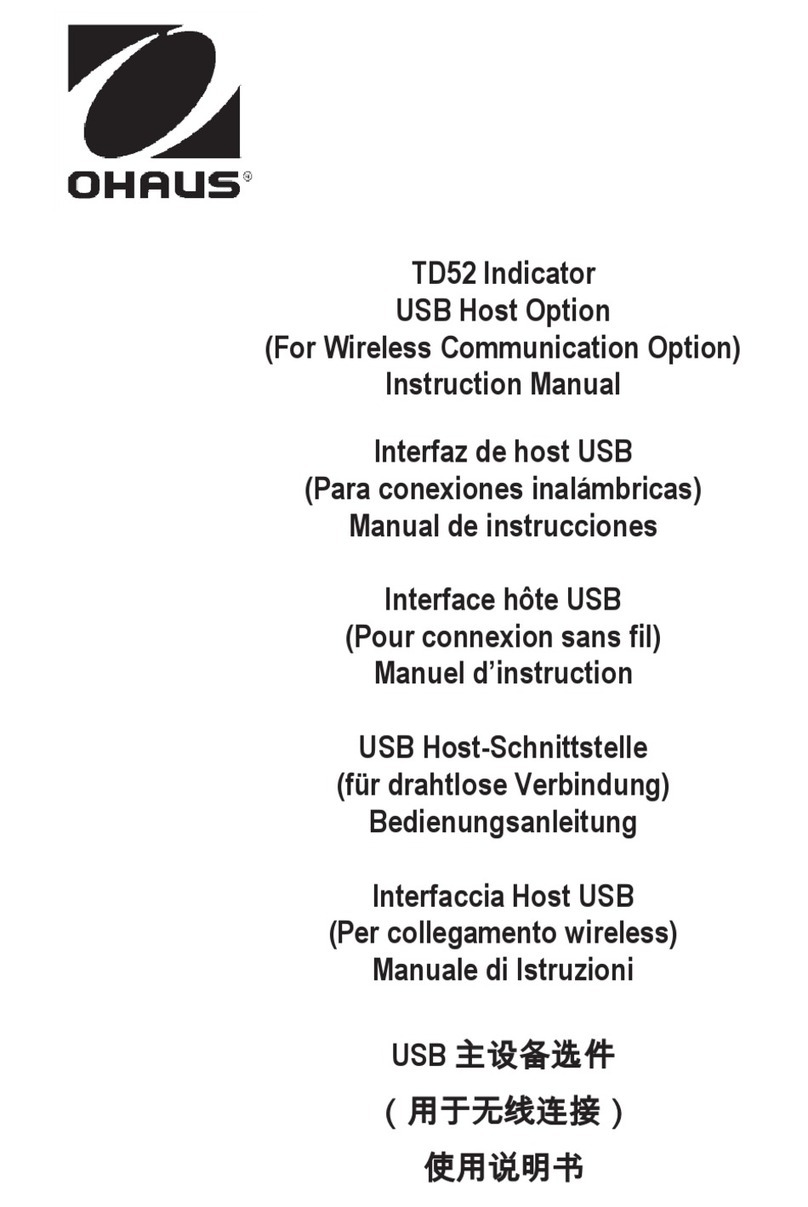
OHAUS
OHAUS TD52 instruction manual
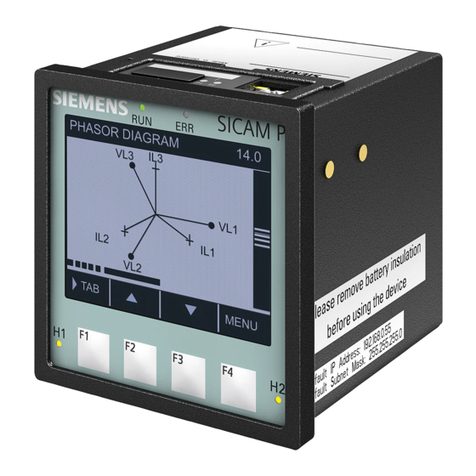
Siemens
Siemens Sicam P855 7KG85 Series Device manual
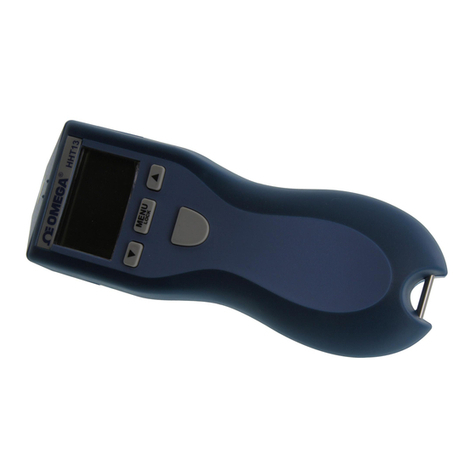
Omega
Omega HHT13 user guide

York Survey Supply
York Survey Supply 343520 operating instructions

